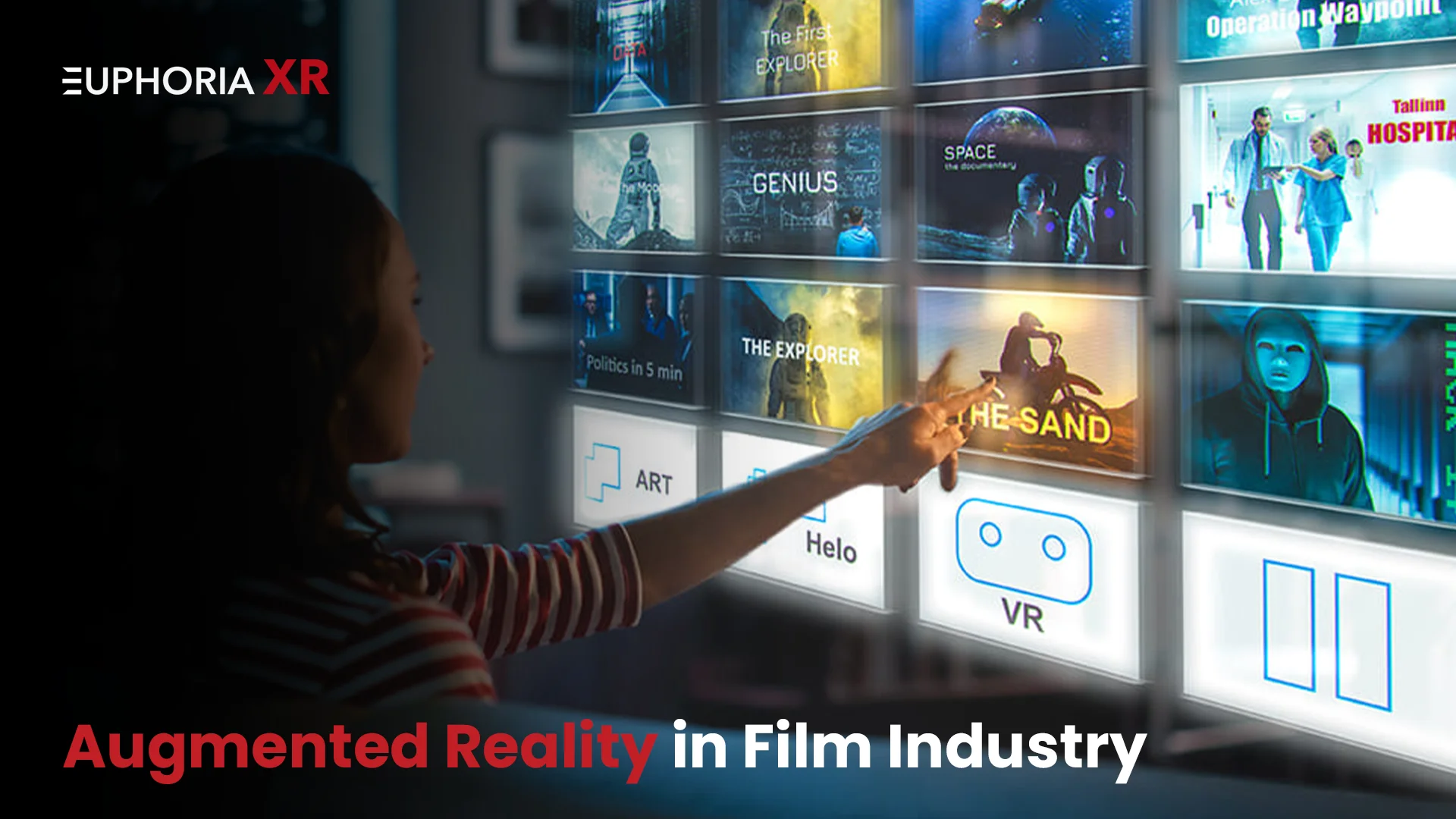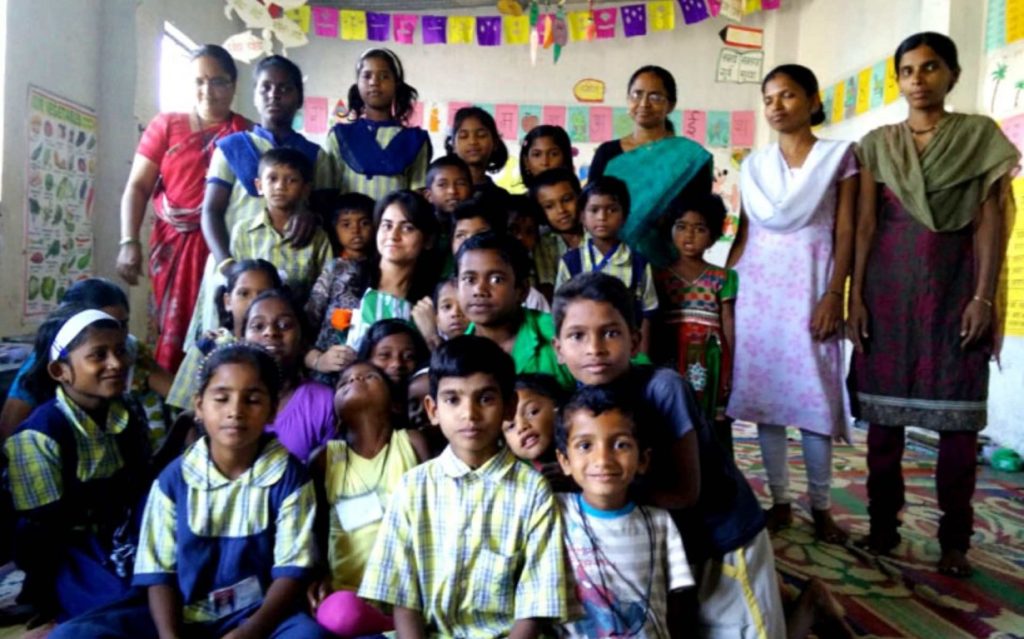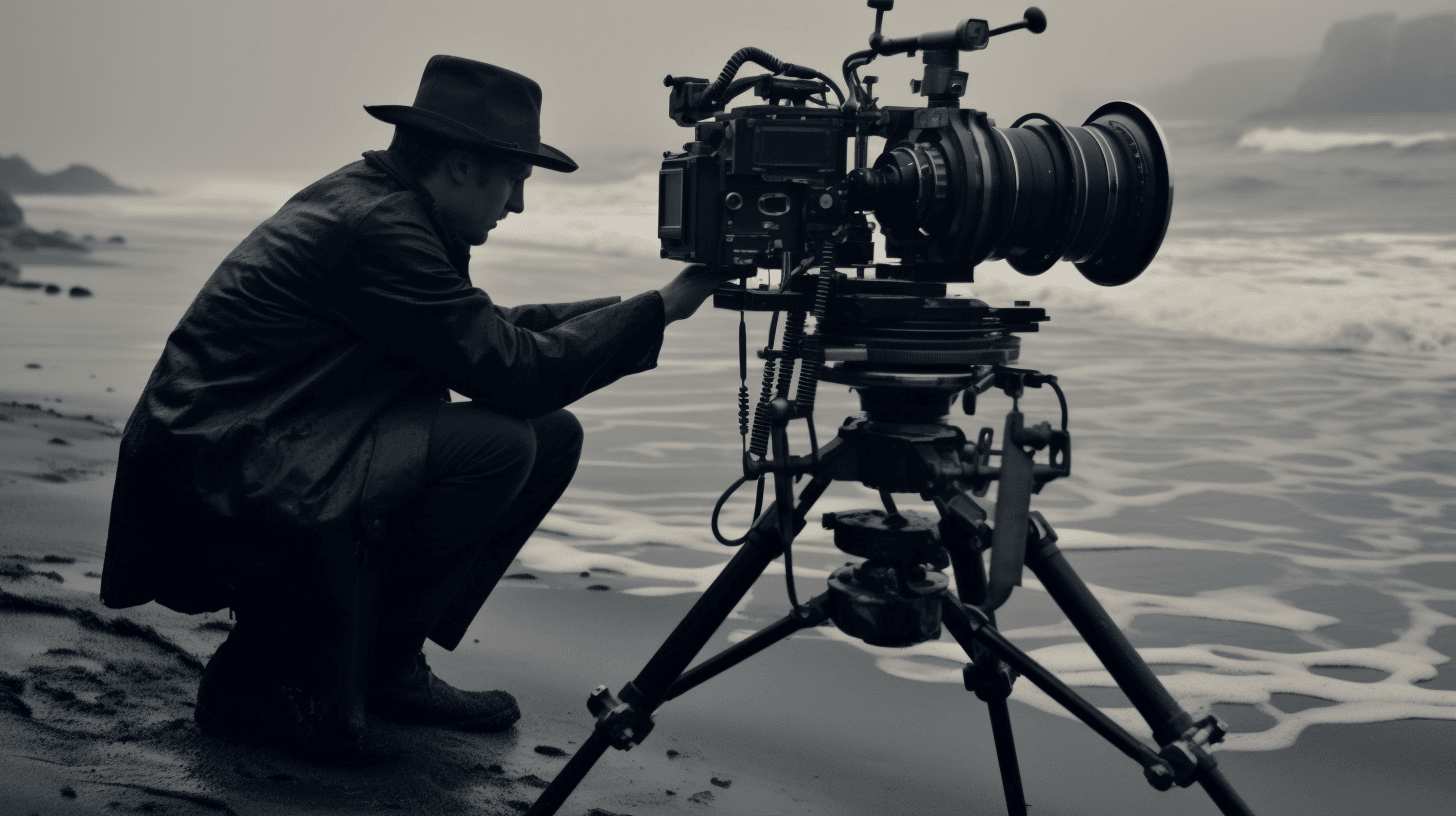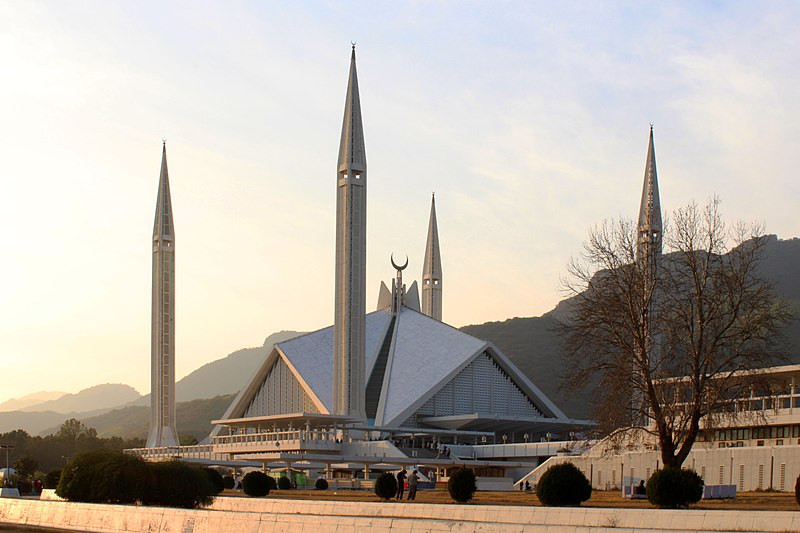Filmmaking and Technology: A Revolution in Visual Storytelling
The Evolution of Filmmaking
Filmmaking, a craft that has captured the imagination of people for over a century, is undergoing a profound transformation as technology continues to drive innovation and change. The journey of filmmaking has been a testament to human creativity, storytelling prowess, and technological advancement. From the early days of silent films to the advent of digital filmmaking and beyond, the medium has evolved significantly, thanks to groundbreaking technological developments that have transformed the way stories are told and experienced.
The history of filmmaking can be traced back to the 1890s when the Lumière brothers first invented cinematography, a device that could capture and project moving visuals. This was soon followed by the introduction of sound in the early 20th century, turning silent films into "talkies." This period, known as the "Golden Age of Hollywood," was characterized by the emergence of iconic movie stars and groundbreaking narratives. However, the real revolution in filmmaking didn't occur until the introduction of digital technology in the late 20th century.
In the 1990s, digital filmmaking began to gain traction, offering filmmakers unprecedented control over their projects. With technologies like high-definition (HD) cameras and digital editing software, filmmakers could experiment with colors, lighting, and sound at a level never before possible. The digital age marked a shift from the traditional film stock and film developing process, allowing for more efficient and cost-effective production. This period was significant in democratizing the film industry, enabling a broader range of filmmakers to share their stories with a wider audience.
By the 2000s, the adoption of digital technology had become widespread, with high-resolution cameras and sophisticated editing tools making it easier to produce high-quality films. The digital revolution also brought about a new era of visual effects and motion capture, revolutionizing how films were made and experienced. With the release of blockbusters like "Avatar" and "The Lord of the Rings," filmmakers could create immersive and visually stunning worlds that were previously beyond the realm of possibility.
Today, the landscape of filmmaking is dominated by cutting-edge technologies that continue to push the boundaries of creativity and storytelling. From virtual production setups, which allow filmmakers to shoot in real-time with virtual environments, to the growing use of artificial intelligence (AI) and machine learning in post-production, the future of filmmaking is as exciting as it is uncertain. These technological advancements are not just tools; they are enablers that open up new dimensions in visual storytelling, allowing filmmakers to explore complex narratives and emotions in ways that were once unimaginable.
Technological Advancements in Filmmaking
The rapid advancement in technology has brought about a myriad of tools and techniques that have transformed the filmmaking process. One of the most significant innovations is the high-definition (HD) cameras, which offer exceptional clarity and detail compared to traditional film. HD cameras provide filmmakers with the ability to shoot with higher resolution, allowing for more nuanced and realistic visual representations.
In addition to HD cameras, digital editing platforms likeFinal Cut Pro, Adobe Premiere, and Avid Media Composer have revolutionized the way films are edited. These software tools offer a range of features such as nonlinear editing, color correction, and audio mixing that were once the exclusive domain of professional post-production facilities. This democratization of post-production has made it possible for filmmakers to work on projects in a more streamlined and efficient manner, often allowing them to achieve professional-grade results from their own personal editing bays.
Another pivotal technology that has transformed the filmmaking process is digital intermediate (DI) workflows. In the past, films were processed through a chemical film laboratory, where the images had to be carefully balanced and color-graded. With DI, all of these adjustments can be made digitally, providing filmmakers with a greater degree of control and flexibility. DI allows for multiple color grades to be created and easily compared, offering a more precise final product that can be adjusted and refined until perfection is achieved.
Visual effects and motion capture have also played a critical role in modern filmmaking. Technologies such as motion capture systems, which record the physical movements of actors, have allowed filmmakers to create seamless and realistic digital creatures and environments. Visual effects software, like Autodesk Maya and Side Effects Houdini, empower artists to bring these digital creations to life, creating fantastical worlds and epic battles that once seemed impossible. The groundbreaking effects in films such as "Avatar" and "The Lion King" showcased the power of these tools and set new standards for visual storytelling.
Furthermore, the advent of green screen technology has changed the way films are shot. Instead of physically transporting actors to remote locations, green screens enable filmmakers to place actors in a studio and then replace the background digitally. This not only saves time and money, but it also provides filmmakers with the flexibility to shoot in any location without being constrained by the physical environment. With advanced compositing software such as Adobe After Effects, these backgrounds can be seamlessly integrated, creating a cohesive and convincing visual narrative.
Virtual production represents the cutting edge of technological innovation in filmmaking. This approach, pioneered by companies like Stagecraft, uses LED panels to create virtual sets that are directly integrated into the shooting process. With real-time camera movement and feedback, actors can perform as if they are in a real location, even though the environment is virtual. This technology has been used to great effect in films such as "The Mandalorian," where the use of virtual sets has allowed for immersive and dynamic storytelling without the limitations of physical sets.
Lastly, the integration of artificial intelligence (AI) and machine learning is increasingly being incorporated into the filmmaking process. AI can assist in tasks such as script analysis, shot selection, and even in the creation of original content. Machine learning algorithms can analyze vast amounts of data to identify patterns and make predictive analyses, which can be extremely useful in pre-production planning and during the editing process. Additionally, AI has the potential to revolutionize post-production by automating complex tasks and providing new tools for color grading, sound design, and even image analysis.
These technologies have not only streamlined the filmmaking process but have also opened up new avenues for creativity and experimentation. With the constant evolution of technology, the possibilities for visual storytelling continue to expand, paving the way for more innovative and captivating films in the years to come.
In conclusion, the evolution of filmmaking over the past century serves as a testament to human ingenuity and the power of technology to enhance human expression. From the early days of silent films to the digital age and beyond, each technological advancement has brought its own unique set of challenges and opportunities, pushing the boundaries of what is possible in visual storytelling. As we look to the future, the integration of emerging technologies like AI and virtual production will undoubtedly continue to transform the industry, opening up new dimensions in film that were once beyond the reach of even the most ambitious filmmakers.
The Impact of Technology on Filmmaking
The impact of technology on filmmaking is multifaceted, influencing every aspect of the production process, from pre-production to post-production. The introduction of digital cameras and editing software has not only streamlined the workflow but has also democratized access to filmmaking, making it more accessible to independent and amateur filmmakers who lacked the resources to work with traditional film stock and chemical processing techniques.
One of the most noticeable impacts of digital filmmaking is the increased efficiency and reduced costs associated with shooting and editing. Films produced digitally require less physical space and equipment, resulting in lower production budgets. Digital cameras offer a wider dynamic range, better low-light performance, and the ability to shoot long takes without the need for immediate processing or film development. This allows filmmakers to capture footage more freely and experiment with different shots and compositions without worrying about running out of film or incurring high costs.
Moreover, digital cameras come with built-in features such as color grading and lens correction options, which can be adjusted on the spot. This immediacy enables filmmakers to make real-time decisions during shoots, enhancing their ability to adapt and improve their work. The ability to shoot raw footage in RAW format also means that filmmakers retain much richer data, providing greater flexibility during post-production. Post-processing technologies like DaVinci Resolve offer powerful tools for color correction, allowing filmmakers to fine-tune their visuals with precision and creativity.
Editing tools have undergone significant advancements as well. With digital nonlinear editing systems, editors can manipulate clips in real time, making it easier to experiment with different pacing and structure. This has led to a renaissance in the art of editing, with filmmakers pushing the boundaries of storytelling through more dynamic and engaging cuts. The seamless integration of audio and video has also improved the overall quality of films, ensuring that soundtracks mix perfectly with visuals and enhancing the immersive experience for viewers.
Another key technology that has transformed filmmaking is visual effects (VFX). While VFX have been integral to Hollywood productions for decades, recent advances have pushed the envelope even further. Motion capture technology has evolved to capture subtle facial expressions and body movements with unprecedented accuracy, allowing for more lifelike performances by digital characters. Real-time rendering engines like NVIDIA Omniverse and Unreal Engine have enabled filmmakers to preview and iterate on their VFX in real time during production, reducing the time and effort required to create and integrate these effects.
The use of green screen technology has also become more sophisticated, with advancements in chroma keying and color correction techniques ensuring that backgrounds are more convincingly seamless. This combination of technology has led to more complex and elaborate visual scenes that can be filmed cost-effectively in controlled studio environments. Virtual production techniques, which utilize LED screens and real-time projection mapping, have become particularly popular in series and large-scale productions. The ability to create detailed virtual sets that can be dynamically altered during filming has enhanced the efficiency and flexibility of production, allowing filmmakers to adapt quickly to changes in the story or setting.
Furthermore, the rise of virtual production has blurred the lines between digital and practical effects, enabling a more integrated approach to filmmaking. This approach has not only saved time and resources but has also resulted in more visually cohesive and engaging scenes. For example, in the Marvel Cinematic Universe, the use of virtual production has allowed filmmakers to create expansive battle scenes and intricate set designs that would have been prohibitively expensive and logistically challenging to produce using traditional methods.
However, the adoption of technology in filmmaking comes with its own set of challenges. One major issue is the skills gap. As new technologies emerge, there is often a shortage of skilled professionals who can effectively use these tools. Training programs and workshops are becoming increasingly important, helping aspiring filmmakers acquire the necessary technical knowledge and practical skills to take full advantage of the latest technologies.
Another challenge is the environmental impact of producing films. The energy consumption required for advanced digital equipment and virtual production setups can be substantial. Filmmakers and production companies are increasingly looking to adopt sustainable practices, such as using renewable energy sources and reducing waste, to offset their environmental footprint. Innovations in sustainable lighting and energy management are also being developed to address this issue.
Despite these challenges, the benefits of integrating technology into filmmaking far outweigh the drawbacks. For indie filmmakers, access to affordable technology has opened up new creative possibilities, enabling them to produce high-quality films with limited resources. Digital tools have made it possible to experiment with different genres and narratives, pushing the boundaries of what is considered conventionally acceptable in mainstream cinema.
In conclusion, technology has had a profound impact on filmmaking, transforming every facet of the production process. From digital cameras and editing software to visual effects and virtual production, these advancements have made filmmaking more efficient, accessible, and creative. As technology continues to evolve, so too will the possibilities for visual storytelling. Filmmakers must embrace these tools while remaining mindful of the ethical and environmental considerations they present. The future of filmmaking will undoubtedly see further integration of cutting-edge technology, offering filmmakers a new canvas on which to paint their visions and captivate audiences in unprecedented ways.
The Future of Filmmaking
The future of filmmaking is a fascinating landscape filled with endless possibilities and challenges. As technology continues to advance at an unprecedented pace, the way we create, distribute, and consume films is likely to undergo even more transformative changes. Here are some of the trends and technologies that could shape the future of filmmaking:
Augmented Reality (AR)
One of the most exciting prospects for the future of filmmaking is the integration of Augmented Reality (AR). AR technology is already being used in various forms, from creating interactive experiences for users to enhancing previsualization and storyboarding processes. For instance, AR can allow filmmakers to create virtual sets and environments in real-time during the preproduction phase, enabling more accurate visualization of scenes and helping directors and producers make informed decisions. In the audience experience, AR can add a layer of interactivity, allowing viewers to engage with the film's world beyond the screen. Imagine a viewer using their smartphone or glasses to overlay additional information or animations onto the film, enhancing their viewing experience.
Virtual Reality (VR)
Virtual Reality (VR) represents another significant frontier in the evolution of filmmaking. VR technology can transport audiences into fully immersive experiences, blurring the line between the screen and reality. Films and movies can be experienced in a 360-degree, interactive environment, providing viewers with a visceral and all-encompassing sensory experience. This could be particularly transformative for genres such as horror, adventure, and fantasy, where the immersive nature of VR can heighten the emotional impact of the narrative. VR could also serve as a powerful tool for marketing and promotional activities, offering potential viewers a glimpse into the world of upcoming films before their full release.
Artificial Intelligence (AI) in Filmmaking
Artificial Intelligence (AI) is already being integrated into many aspects of the filmmaking process, and its potential implications are vast. AI can assist in scriptwriting by analyzing data to generate ideas, themes, and storylines. It can also help in the editing process by automatically spotting potential issues in the footage. In post-production, AI can automate tasks such as color grading, sound design, and video stabilization, freeing up valuable time for creative work. Furthermore, AI can be used to predict audience reactions based on historical data, aiding filmmakers in making decisions that align with market preferences.
Blockchain and Blockchain-Based Studios
Blockchain technology is gaining traction in industries ranging from finance to music, and its applications in filmmaking are beginning to emerge. Blockchain can enhance transparency and accountability in the film industry by tracking the ownership and distribution rights of films using decentralized ledgers. This could help resolve copyright disputes and ensure fair distribution and compensation for creators. Additionally, blockchain-based studios are experimenting with new financing models that involve crowdfunding and direct consumer investments, providing alternative funding sources for filmmakers.
Interactive Filmmaking
The concept of interactive filmmaking is becoming increasingly popular, combining elements of traditional storytelling with user-driven narratives. Interactive films can be accessed via apps, where viewers make choices that influence the plot or characters' destinies. This form of filmmaking encourages active engagement from the audience, fostering a more personal and participatory relationship with the content. Games like "Black Mirror: Bandersnatch" have already demonstrated the potential of interactive storytelling, showing that this paradigm shift can captivate audiences in innovative and unforgettable ways.
Quantum Computing
While still in its infancy, quantum computing holds enormous promise for revolutionary advancements in filmmaking. Quantum computers can process an exponentially larger amount of data faster than classical computers, making complex simulations and real-time rendering capabilities more feasible. Quantum computing could significantly reduce the time and resources required for creating highly complex visual effects and animations, paving the way for ultra-realistic and dynamic content. For example, simulating large-scale battles or natural phenomena like earthquakes or weather could be done in real-time, enhancing the authenticity and realism of cinematic portrayals.
Micro-budget Filmmaking
With the democratization of technology, micro-budget filmmaking is becoming more prominent. Affordable digital cameras, high-quality editing software, and online distribution channels have empowered countless filmmakers to produce high-quality content on modest budgets. Platforms like FilmFreeway and Subble are making it easier for independent filmmakers to pitch and distribute their work globally, reaching wider audiences without the need for extensive investment or traditional distribution networks. Micro-budget filmmaking is not only democratizing access to filmmaking but also fostering a diverse and innovative community of creators.
Ethical Considerations and Environmental Impact
As technology continues to play a larger role in filmmaking, ethical considerations and environmental impact become increasingly important. Filmmakers must be mindful of the environmental footprint of their productions, particularly those involving heavy reliance on digital effects and virtual production setups. Sustainable practices such as energy-efficient equipment, remote working, and eco-friendly materials can help minimize the negative impact of filmmaking. Additionally, ethical considerations surrounding data privacy, AI decision-making, and the portrayal of sensitive topics must be addressed to ensure responsible and inclusive storytelling.
In conclusion, the future of filmmaking is both exhilarating and challenging. Advances in technology are reshaping the industry, offering new opportunities for creativity, efficiency, and engagement. From augmented and virtual realities to AI and blockchain, these emerging technologies will continue to transform the way we create, distribute, and consume films. As filmmakers embrace these trends, they must also navigate the ethical and environmental considerations that come with their adoption. The future of filmmaking promises a vibrant and exciting landscape, where the fusion of technology and art will continue to captivate audiences and push the boundaries of visual storytelling.



















Comments